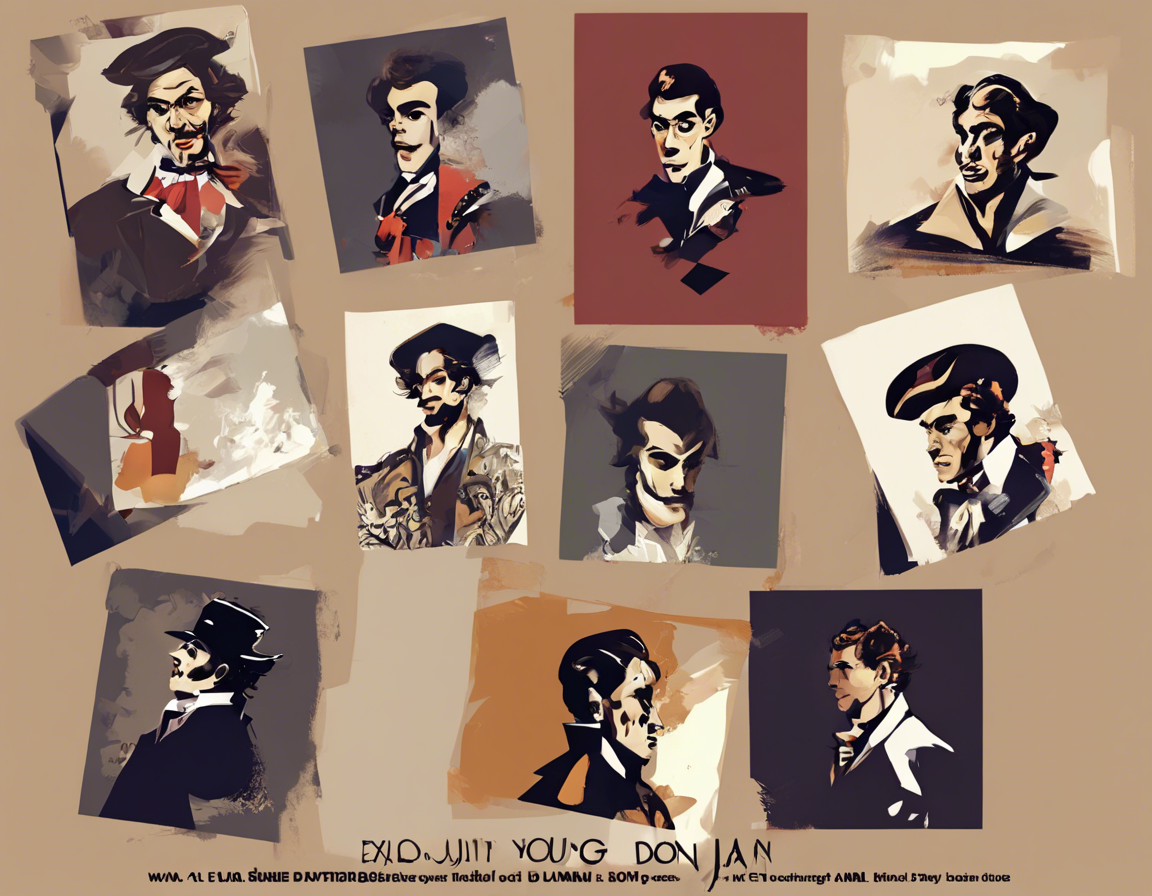From the ancient Greek myth of Apuleius’ “The Golden Ass” to modern-day bestsellers like E.L. James’ “Fifty Shades of Grey,” the exploration of sensual, erotic, and often taboo subjects has captivated readers for centuries. Among the literary classics that have stood the test of time is the scandalous and provocative tale of a young libertine, “The Story of the Eye” by Georges Bataille. This controversial novella, first published in 1928 under the pseudonym Lord Auch, explores the boundaries of desire, debauchery, and the dark side of human sexuality.
The Twisted World of “The Story of the Eye”
At the heart of “The Story of the Eye” is a torrid and twisted love affair between the unnamed narrator and Simone, a young woman who shares his obsession with erotic experimentation. Together, they embark on a journey of sexual awakening that pushes the boundaries of social norms and conventional morality. Their insatiable appetite for taboo acts leads them down a path of increasingly perverse and violent sexual encounters, culminating in a shocking climax that defies all expectations.
Themes of Desire, Power, and Transgression
Central to the narrative of “The Story of the Eye” are themes of desire, power, and transgression. The characters’ relentless pursuit of pleasure at any cost exposes the dark underbelly of human nature, where the line between ecstasy and madness blurs. As they push the boundaries of their desires, they grapple with questions of agency, control, and the consequences of their actions. The novella’s exploration of the taboo serves as a provocative commentary on the nature of sexual and psychological boundaries.
Symbolism and Imagery in “The Story of the Eye”
Bataille employs rich symbolism and imagery throughout the novella to evoke a sense of unease and fascination in the reader. The recurring motifs of eggs, eyes, and bulls underscore the themes of fertility, voyeurism, and primal instincts that drive the characters’ actions. These symbolic elements serve to deepen the psychological and emotional dimensions of the text, inviting readers to contemplate the hidden meanings lurking beneath the surface of the narrative.
A Provocative Exploration of Human Nature
“The Story of the Eye” stands as a provocative exploration of human nature’s darkest impulses and desires. Through its graphic depictions of taboo acts and unconventional relationships, Bataille challenges readers to confront their own assumptions about sexuality, morality, and the limits of self-exploration. The novella’s shocking climax leaves a lasting impact, inviting reflection on the complexities of human desire and the consequences of pursuing it to its most extreme ends.
Controversy and Criticism
Since its publication, “The Story of the Eye” has sparked controversy and garnered both praise and criticism for its explicit content and unflinching portrayal of taboo subjects. Critics have debated the novella’s merits as a work of literature, with some praising Bataille’s boldness and innovation, while others have condemned its graphic scenes and provocative themes. Despite the divisive reactions it has inspired, “The Story of the Eye” remains a seminal work in the tradition of erotic literature, pushing the boundaries of what is considered acceptable in literary expression.
Frequently Asked Questions (FAQs)
-
Is “The Story of the Eye” suitable for all readers?
While “The Story of the Eye” is a work of literary significance, its explicit content and graphic scenes may not be suitable for all readers. It is recommended for mature audiences who are comfortable with erotic and provocative subject matter. -
What themes does “The Story of the Eye” explore?
“The Story of the Eye” delves into themes of desire, power, transgression, and the darker aspects of human sexuality. It challenges readers to confront their own assumptions about morality and the boundaries of self-expression. -
How does Georges Bataille use symbolism in the novella?
Bataille employs rich symbolism and imagery throughout “The Story of the Eye” to convey deeper meanings and emotions. The motifs of eggs, eyes, and bulls serve as symbols of fertility, voyeurism, and primal instincts, enriching the narrative with layers of depth and complexity. -
What is the significance of the novella’s shocking climax?
The shocking climax of “The Story of the Eye” serves as a provocative statement on the consequences of pursuing extreme desires and the complexities of human nature. It leaves a lasting impact on readers, inviting reflection on the implications of taboo acts. -
How has “The Story of the Eye” been received by literary critics?
Critics have diverse opinions on “The Story of the Eye,” with some praising its boldness and innovation, while others critique its graphic content and provocative themes. Despite the controversy, the novella remains a seminal work in the realm of erotic literature.
In conclusion, “The Story of the Eye” stands as a bold and provocative work that challenges readers to confront their own assumptions about desire, morality, and the darker aspects of human nature. Through its graphic depictions and unflinching exploration of taboo subjects, Georges Bataille’s novella remains a seminal contribution to the genre of erotic literature, pushing the boundaries of literary expression and inviting readers to delve into the depths of their own desires and fears.
